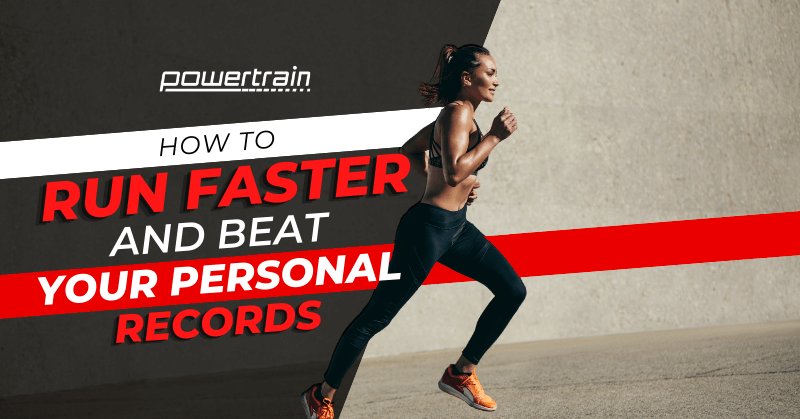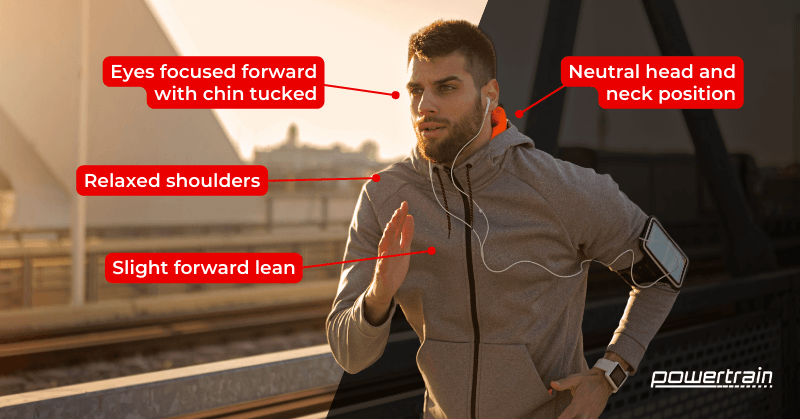How to Run Faster: 6 Effective Tips for Beating Your Personal Records

Running at your natural pace can be one of the most relaxing and effective outdoor physical activities you can engage in. You can conquer a good distance in a day with enough push to increase your run’s intensity.
But all runners have their individual goals for why they choose to keep on adding steps to their strides. Some do it for health reasons, while others are looking to challenge themselves. Whatever your reason, increasing your running speed can be an excellent way to push your limits and improve your endurance.
Here are some practical and proven methods to run faster and surpass your personal best!
6 Tips for Running Faster
1. Know your current running state.

Before you work on doubling your pace, you need to have a baseline of your current performance. You can do this by measuring your speed in kilometres per hour (kph) during a long run. Using a smartwatch or a running app will make it easier to get your current speed.
Having measurable data can be very helpful when increasing your pace so you can compare your performance. Plus, it’s important to understand your health and fitness level, so you know how hard you can safely push yourself while training.
2. Develop a training plan.
One of the most effective ways to increase your running speed is by creating a training regimen that will help you improve your strength, endurance and speed.
This training plan should focus on speed training and incorporate different runs to allow your body to get accustomed to running fast without adding too much stress to your muscles.
Some of the techniques you need to incorporate are:
Speed and interval training
Interval training is when you alternate between one or two kinds of runs in a single running session. You can include a recovery run with high-intensity sprints and then go back to walking or jogging.
This training can be done outdoors or in the comfort of your home on a treadmill. This speed and interval training can help gradually adjust your resistance, endurance, incline and pace.
As your body becomes more familiar with running longer distances faster, your strength and cardiovascular endurance will also improve. This will also help you develop better form and thus minimize the risk of injuries while improving your running efficiency.
Tempo runs
This run is intended to increase your pace and further build your endurance. A tempo run will encourage you to sustain a fast but manageable speed for a longer time. Your pace should be between jogging and sprinting.
Several runners use tempo runs to help improve their records, especially if preparing for a long run or race.
Exercises

Pairing your running with some strength-training and stamina-building exercises can make you better prepared to increase your running speed.
Indoor cycling is one exercise that you can pair with running. This workout is ideal when you want to build your calf muscles, glutes, hamstrings and quadriceps — muscles you need to improve your running speed and overall performance.
You can also try strength training to build strength in your core and upper body, which will help improve your running endurance. Adjustable dumbbells, which take up only a small amount of space, are a fantastic addition to any runner’s collection of gear.
Make sure you have a more rounded workout routine and avoid limiting yourself to running. Trying other activities will also motivate you and push your mind and body further.
3. Maintain the correct running posture.

When improving your running speed, you are more likely to focus only on the time it takes to finish your desired distance. But, one important aspect that is often neglected is good posture.
Your posture significantly impacts your body movement. For example, your core muscles will impact your running speed and a strong core will help ensure you don’t get strained or injured.
When running, always keep a neutral head and neck position. Your eyes should always be focused forward with your chin tucked. Imagine having an egg placed under your chin — this is the correct head and neck posture while running.
Your frame should be tall with a slight forward lean and your shoulders relaxed but levelled.
4. Breathe, breathe and breathe!
While running, your body craves oxygen, and proper breathing will help supply your muscles with this much-needed oxygen.
Breathe through your mouth and nose to inhale as much oxygen as possible. Do not grasp or take in long, hungry gulps because this will affect your overall running performance including your pace.
Instead, sync your breathing with your strides.
Every breath should be another running stride. This breathing technique will help ensure that you are correctly supplying your body with oxygen as you increase your pace. It will also get the most out of your lung capacity and help your endurance.
5. Increase your foot turnover.
Foot turnover is the number of steps you take in one minute. You need to know your current turnover to strive for a faster rate and achieve an optimal balance between frequency and stride length. When you accomplish this, your running speed will increase, and you will also become a more efficient runner.
To calculate your foot turnover, count your steps — the number of times your foot hits the ground — for one minute. Then, multiply that number by two. This is also where the “180 steps per minute,” which is the perceived good running cadence, stems from.
Note that the turnover rate for non-elite runners is slower, and 180 steps per minute is a far-fetched goal. But you can use this number as your reference point to create a plan to gradually increase your foot turnover.
6. Allow your body to recover.

Commitment is good, but you should never do back-to-back rigorous workouts. Your body needs time to heal and recover, so give yourself up to three days off per week.
A tired body cannot perform as efficiently as you want. It is better to have a running and workout schedule spread throughout the week.
You can push yourself to run faster and your body to endure longer runs, but make sure that your body always gets the chance to repair.
Wrapping up
Running faster can be a great goal when testing your body’s endurance, and it can be very satisfying knowing that you have beaten your previous record. However, running fast is not the be-all and end-all. The ultimate goal is to improve your running speed in a safe and consistent way.
Enjoy the process and be creative with your workout routines. If you want to increase your running speed by training at home, Powertrain treadmills can help you meet your workout targets as you work to improve your speed. Check out our range of treadmills today and find the best cardio machine for your home gym.
You May Also Like:
- 6 Types of Runs You Should Know as a Beginner
- Which Powertrain Treadmill Should I Get?
- How to Choose the Best Running Shoes for Beginners
- Foam Rolling: A Guide for New Runners


